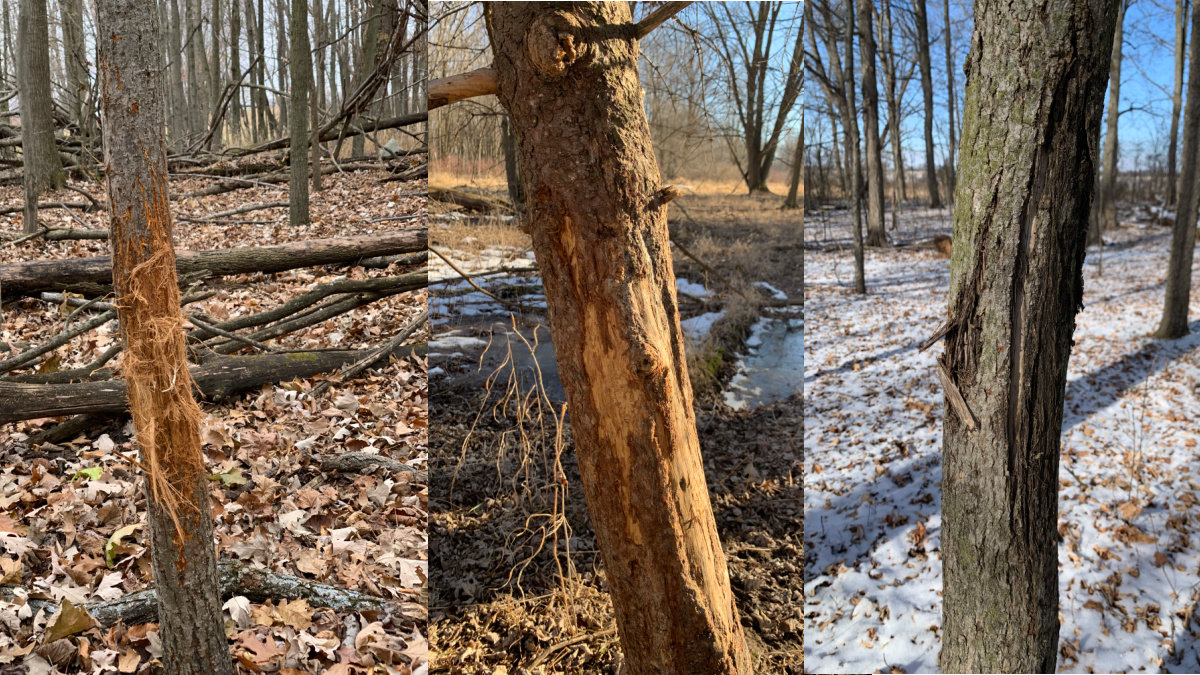
I can clearly remember the excitement I felt following in my grandfather’s footsteps some 30 years ago as he pointed out whitetail rubs strewn across the forest surrounding our family deer camp. The bright orange slashes stood out among the trees like red lights in the distance screaming, “STOP! A buck was here!”
I was in awe. I was also completely unaware of the fact that that there was more to this sign than its simple existence.
While I still experience a similar thrill when spotting a rub, I’ve since discovered exactly what you can learn from whitetail rubs and what to do with that knowledge. Here are three such lessons we can each learn from this important sign.
Proof of Quality
Rubs, at their most basic level, can help you discern the size of deer in a given area. Because of this, Michigan bowhunter Tony Hansen believes rubs are of particular importance when scouting a new property.
“I’m trying to get a feel for the amount of deer an area holds and any indication I can get of the quality of bucks in an area,” Hansen wrote in his book “An Antler Geek’s Manifesto.” “I’m a firm believer that big rubs mean big bucks and thus any oversized rubs definitely get my attention.”
If you’re in pursuit of a bigger or older deer, this is critical information.
While not without exception, it’s widely believed that big bucks will make both small and large rubs, but small bucks almost never make big ones. This means that if you see a particularly large and tore-up rub, you can safely assume there’s a mature buck in the area. What large means can vary by region, but if you see a rubbed-up tree with a diameter of 5 inches or more, it was likely created by a mature animal. Another key factor is how high a rub goes up a tree. Small bucks typically keep their rubs below human waist height, while a big buck might shred a tree much higher.

Proof of Timing
Not only can a rub tell you that a mature buck was in the area, it can tell you when a mature buck was in the area.
Understanding the freshness of an in-season rub can help you make decisions about whether an area is worth hunting in the short term. But this can also be valuable information for the long term, especially when studying rubs in the off-season. The age of a rub can help determine what circumstances or habitat types were present during the year that sign was made, which can then help predict deer movement during future seasons.
Take, for example, how beneficial it would be to understand if a set of old rubs were made during a year when the surrounding crop fields were in corn or beans. If there’s a clear connection between one of those two, all of a sudden you have an important clue as to when you should focus your future efforts.
The greatest indication of the age of a rub is the color and visible shredding. The fresher the rub, the more loose, peeled bark will be visible and the brighter the coloration of the torn bark, which is typically orange or yellow. An extremely fresh rub will almost look wet, while a brightly colored but dry rub is likely in the week-or-more-old category.
It’s common for year-old rubs to lose some of this aforementioned color while still retaining visibly shredded bark. By year two the color of a rub will be no different then the rest of the tree and the scar will have begun healing. Once rubs get older than this, they’ll heal up so much as to look more like a tree trunk whorl than a rub.
Of course, different tree species heal at different rates, so adjust these rules as necessary for the tree types in your area.
Proof of Pattern
Rubs can also shine a light on specific deer patterns. The trick is to not view a rub in isolation, but to consider how it might fit into the larger picture and why that rub and any others were made in a given location. A single rub can tell you a little bit, but a line, cluster, or concentration of rubs can tell you much more. Find a line of rubs that parallel a trail and you very well might have discovered a preferred buck travel route. Find a cluster of big rubs tucked into thick, nasty cover and you might have found a preferred buck bedding area.
The ultimate example of this would be tying specific rubs back to specific bucks. This is possible in certain circumstances where previous scouting and trail cam data indicate there is only one mature buck in the area. In that case, any large, fresh rub could be attributed to him. Or, in other cases, some bucks have unique antler characteristics that can leave certain signatures on their rubs that can be identified by a hunter.
I hunted a buck like that in 2020. He had matching 1-inch-long sticker points on the front of each antler base that left distinctive parallel gouges in every tree he rubbed. These trees were absolutely shredded and unlike any other rubs I’d seen in this area before. Their presence spelled out this buck’s movements like a yellow brick road.
If I could speak to my younger self, three long decades ago, I’d tell him that he was right to be thrilled by those rubs, but wrong to stop with that simple emotion. Rubs are reason to be excited, but also an important piece to your deer hunting puzzle. Study them well and place them appropriately.
Feature image via Captured Creative.





